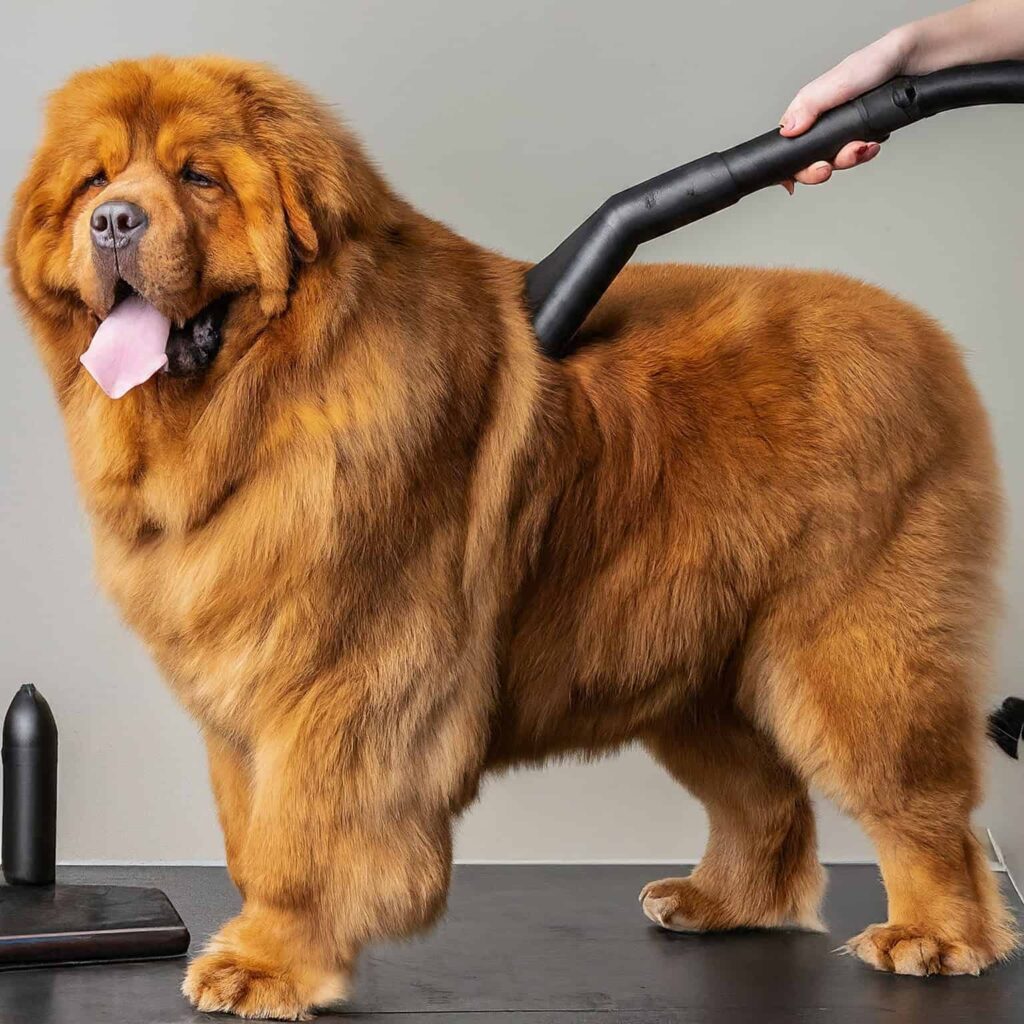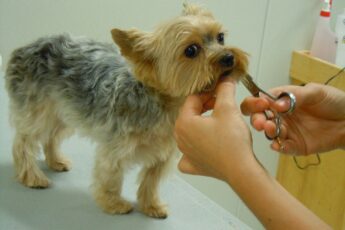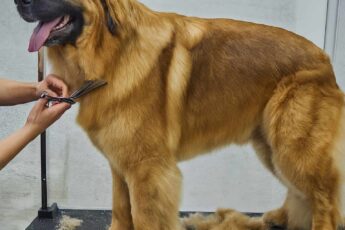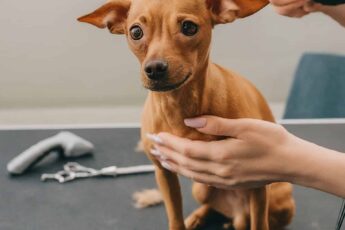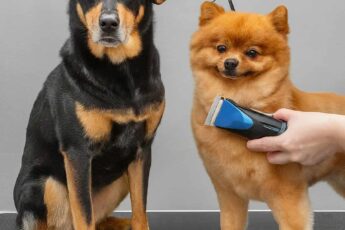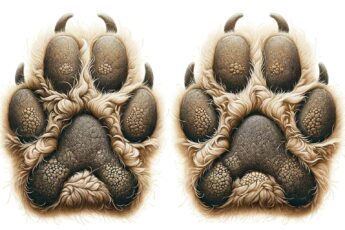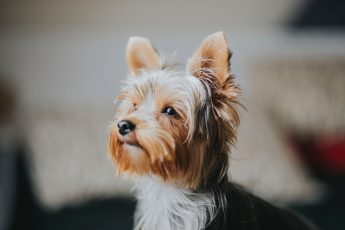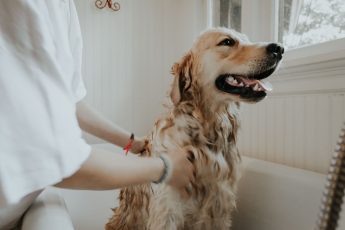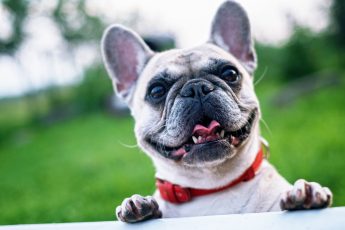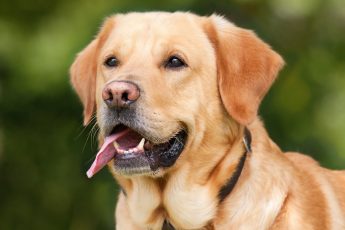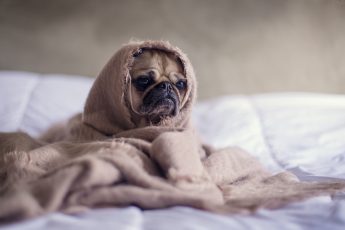Benefits of Using a Vacuum for Grooming
Using a vacuum for grooming is a game-changer. It keeps your home cleaner by capturing loose fur before it lands on your furniture. Less fur means less mess.
Vacuum grooming is also a time-saver. The suction quickly removes loose hair and dirt, cutting grooming time in half. More time for fetch, less time for cleanup.
Your dog’s coat will thank you. The vacuum stimulates the skin and spreads natural oils, producing a shinier, healthier coat. It also removes allergens and irritants lurking in the fur.
Many dogs find the gentle suction soothing, making grooming a spa-like experience. Sure, some might need a bit of getting used to, but with patience and treats, most dogs will come around.
Vacuum grooming combines speed and effectiveness, keeping your dog looking sharp and your home fur-free. Ready to make grooming a breeze? Grab that vacuum and see the magic!
Best Dog Grooming Vacuums
| Image | Price | Buy | Title |
|---|---|---|---|
 Top Top | Buy Now | AIRROBO Dog Grooming Vacuum, Dog Hair Vacuum,12000Pa Strong Pet Grooming Vacuum for Dogs, 2L Large Capacity Dog Vacuum for Shedding Grooming Hair, Quiet, 5 Pet Grooming Tools, PG100 | |
 Top Top | Buy Now | oneisall Dog Hair Vacuum & Dog Grooming Kit, Pet Grooming Vacuum with Pet Clipper Nail Grinder, 1.5L Dust Cup Dog Brush Vacuum with 7 Pet Grooming Tools for Shedding Pet Hair, Home Cleaning | |
 Top Top | Buy Now | neabot Neakasa P1 Pro Pet Grooming Kit & Vacuum Suction 99% Pet Hair, Professional Clippers with 5 Proven Grooming Tools for Dogs Cats and Other Animals | |
 Top Top | Buy Now | Afloia Dog Grooming Kit, Pet Grooming Vacuum & Dog Clippers & Dog Brush for Shedding with Vacuum Grooming Tools, Low Noise Dog Vacuum Hair Remover Pet Grooming Supplies | |
 Top Top | Buy Now | Simple Way Pet Grooming Vacuum, 6 in 1 Dog Grooming Kit with 3 Suction Mode and Large Capacity Dust Cup, Dog Vacuum for Shedding Grooming and Pet Vacuum for Dog Hair at Home (White) |
Choosing the Right Vacuum
Selecting the right vacuum for grooming your dog can make all the difference. There are a few key features to consider. First, you need strong suction power to effectively remove loose fur without being too intense. The vacuum should be gentle enough not to scare or hurt your pet.
Next, consider the attachments and tools that come with the vacuum. Look for a variety of grooming tools like clippers, brushes, and de-shedding tools. These attachments make the grooming process smoother and more versatile.
The Oneisall Dog Hair Vacuum, for example, includes grooming tools such as clippers and nail grinders, which are useful for a thorough grooming session.
Noise level is another important factor. Many dogs are sensitive to loud noises, so a quieter vacuum can help keep your pet calm during grooming. The Neabot P1 Pro Pet Grooming Kit, known for its low noise levels, is a great option for noise-sensitive dogs.
Portability and ease of cleaning are also critical. A lightweight, portable vacuum is easier to maneuver and store. The Bunfly Pet Clipper Grooming Kit, with its large dust canister and easy-to-clean design, is a practical choice for those who value convenience.
Finally, ensure the grooming tools are gentle on your dog’s skin. Rubber-tipped brushes or similar features can help prevent irritation. For example, the Laymi G18 Dog Grooming Kit includes a slicker brush that is gentle yet effective for removing loose hair.
Choosing the right vacuum involves balancing these factors to find the best fit for your dog’s needs and preferences.
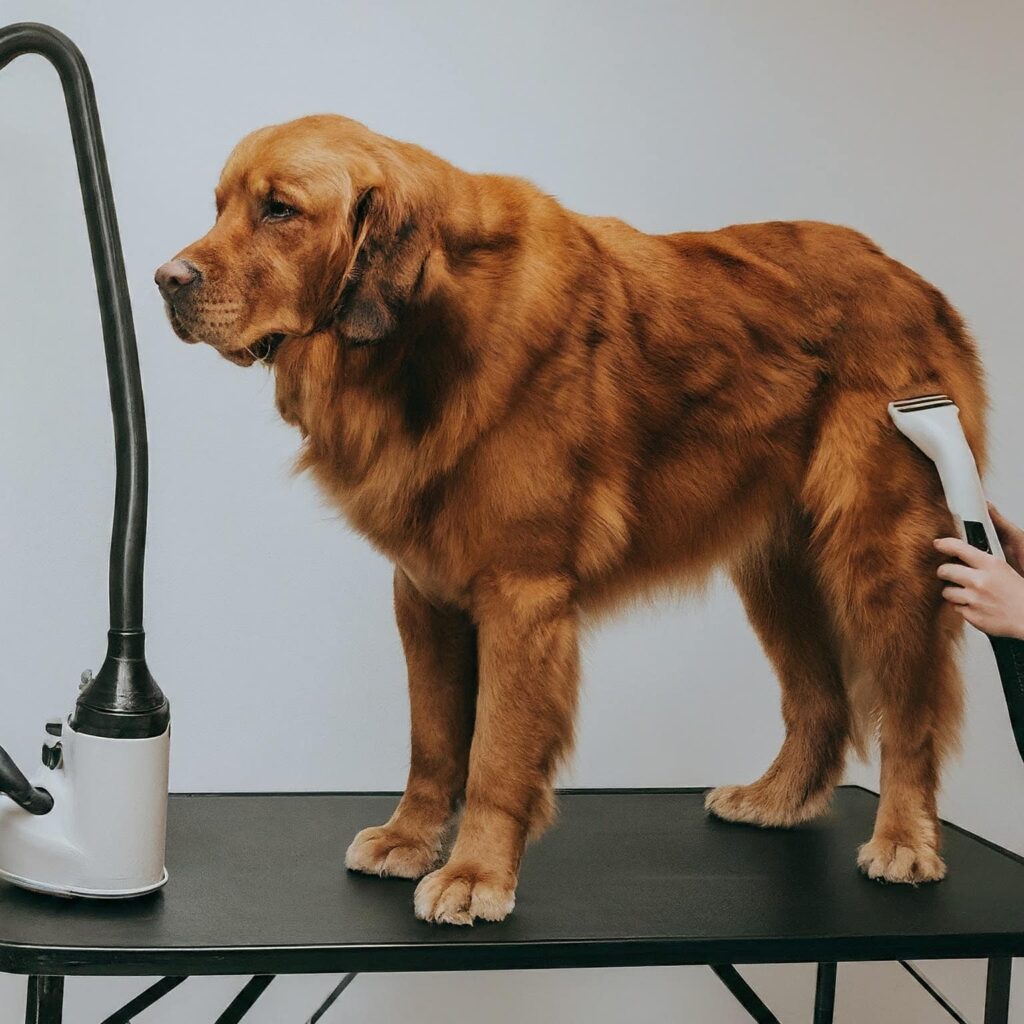
Preparing Your Dog for Vacuum Grooming
Getting your dog ready for vacuum grooming takes some preparation. Start by familiarizing your dog with the vacuum. Let them see and sniff the machine while it is turned off. This helps reduce any fear of the unknown.
Next, turn the vacuum on at a distance so your dog can get used to the noise. Gradually bring it closer while offering treats and praise. This positive reinforcement can help create a good association with the vacuum.
Desensitization is key. Spend a few days getting your dog used to the vacuum before you start grooming. Use short, frequent sessions to build their comfort level. Patience is crucial here. Rushing the process can increase anxiety.
Use treats strategically. Give your dog a treat for calm behavior around the vacuum. This rewards them for staying relaxed and helps build positive associations. Consider using high-value treats that your dog loves to make the experience more enjoyable.
When you’re ready to start grooming, ensure you have all your tools at hand. Attach the appropriate grooming tool to the vacuum and begin with short, gentle strokes. Start in areas your dog is comfortable with, like the back or sides, before moving to more sensitive areas.
Creating a calm environment is also important. Choose a quiet room and minimize distractions. Your calm demeanor can help your dog stay relaxed. Grooming should be a bonding experience, so keep it positive and stress-free.
Preparing your dog for vacuum grooming may take time, but with patience and positive reinforcement, your dog can learn to enjoy the process.
Step-by-Step Guide to Dog Grooming with Vacuum
Setting Up
To start, create a calm and comfortable space for grooming. Gather all necessary tools like the vacuum, grooming attachments, treats, and a brush. This preparation ensures you have everything at hand, reducing stress for both you and your dog.
Brushing
Before using the vacuum, brush your dog’s coat to remove any tangles or mats. This initial step makes vacuum grooming more effective and comfortable for your pet. Use a de-matting tool if necessary, focusing on areas prone to knots.
Introducing the Vacuum
Turn on the vacuum at a low setting. Let your dog get used to the sound from a distance. Gradually bring the vacuum closer, using treats to reinforce positive behavior. This step is crucial for reducing anxiety.
Grooming
Start by gently running the vacuum attachment over your dog’s back, moving in the direction of hair growth. Use slow, gentle strokes, adjusting the suction level as needed. Pay close attention to your dog’s reaction, ensuring they remain calm and comfortable.
Sensitive Areas
Be extra cautious around sensitive areas like the face, ears, and belly. Use lighter pressure and smooth movements. If your dog shows signs of discomfort, take a break and offer reassurance.
Cleaning Up
After grooming, give your dog’s coat a final brush to remove any remaining loose hair. Clean the vacuum attachments and empty the collection bin. Regular maintenance of the vacuum ensures it remains effective and prolongs its lifespan.
Conclusion
Following these steps helps make vacuum grooming a stress-free experience for your dog. Consistency and patience are key. Over time, your dog will associate vacuum grooming with a positive experience, making it easier for both of you.
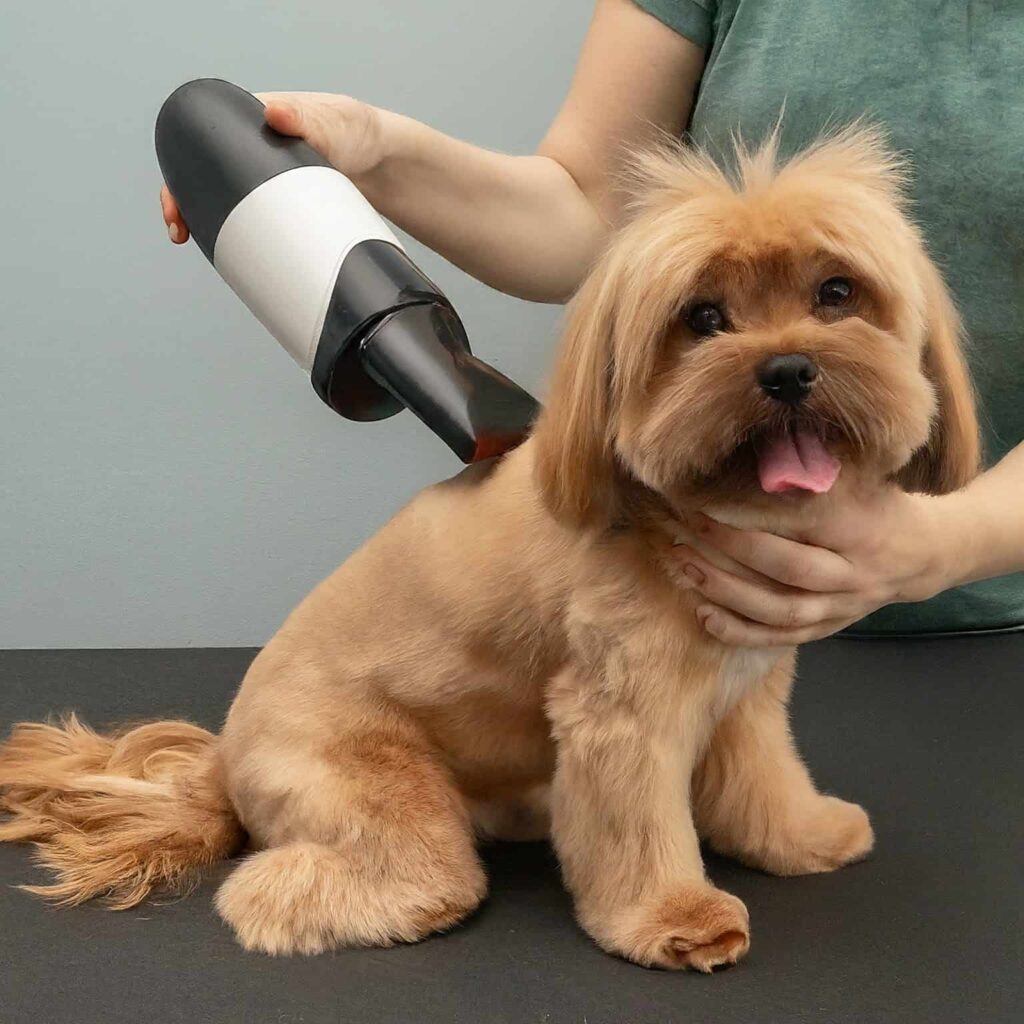
Common Challenges and Solutions
Anxious Dogs
Many dogs are initially anxious around vacuums. Start by letting them see and sniff the vacuum while it’s off. Gradually introduce the noise and sensation, using treats and praise to create positive associations.
Handling Different Coat Types
Different dogs have different grooming needs. For long-haired breeds, use a de-shedding tool to remove loose fur. Short-haired dogs may only need a basic brush attachment. Always use tools designed for your dog’s specific coat type to avoid discomfort.
Vacuum Issues
Sometimes, vacuums can lose suction or become clogged. Regularly clean the attachments and empty the collection bin to maintain performance. If the vacuum has different suction levels, start with the lowest setting to avoid startling your dog.
Addressing Mats and Tangles
For mats and tangles, use a de-matting tool before vacuuming. Work through knots gently to prevent pulling on the hair. Regular grooming can prevent mats from forming, making each session smoother.
Keeping the Environment Calm
Grooming can be stressful for dogs. Keep the environment calm by reducing noise and distractions. Play soothing music or use a white noise machine to mask the vacuum sound. Your calm demeanor can also help your dog stay relaxed.
By addressing these common challenges, you can make vacuum grooming a more pleasant experience for your dog. Patience and persistence are essential. Over time, both you and your dog will get used to the process, making grooming sessions smoother and more enjoyable (Neakasa) (Uproot Clean) (AiDot – Go beyond Smart) (Top Dog Tips).
Safety Tips for Dog Grooming with Vacuum
Ensuring safety during vacuum grooming is paramount. Here are some essential tips to keep your dog comfortable and secure.
Create a Calm Environment
Before you begin, make sure your dog is calm and relaxed. Use treats, gentle strokes, and a soothing voice to create a positive atmosphere. A quiet dog is less likely to get startled and more likely to cooperate.
Avoid Sensitive Areas
Avoid vacuuming sensitive areas like the head and face. These regions can be groomed using traditional methods such as brushing or wiping with a damp cloth. The vacuum’s suction can be too harsh for these delicate parts.
Use Pet-Friendly Equipment
Invest in a pet-friendly vacuum or grooming attachment designed for animal use. These tools are gentler on your dog’s skin and coat, reducing the risk of injury. Look for vacuums with adjustable suction settings to find the right level for your dog’s comfort.
Gentle Technique
When vacuum grooming, use gentle, sweeping motions starting from the back and working towards the front. This method prevents tangles and ensures thorough cleaning. Avoid applying excessive pressure to prevent discomfort or harm.
Regular Breaks
Take regular breaks during grooming sessions, especially if your dog seems stressed or restless. Short, frequent sessions are better than one long, overwhelming one. This approach helps build your dog’s tolerance over time.
Monitor for Signs of Stress
Pay close attention to your dog’s behavior. Stop the session immediately if you notice signs of stress, such as panting, trembling, or trying to escape. Ensuring your dog feels safe and comfortable throughout the process is crucial.
Cleaning and Maintenance
Regularly clean and maintain your grooming equipment. Remove collected hair from the attachments and empty the collection bin after each session. This keeps the vacuum functioning properly and extends its lifespan.
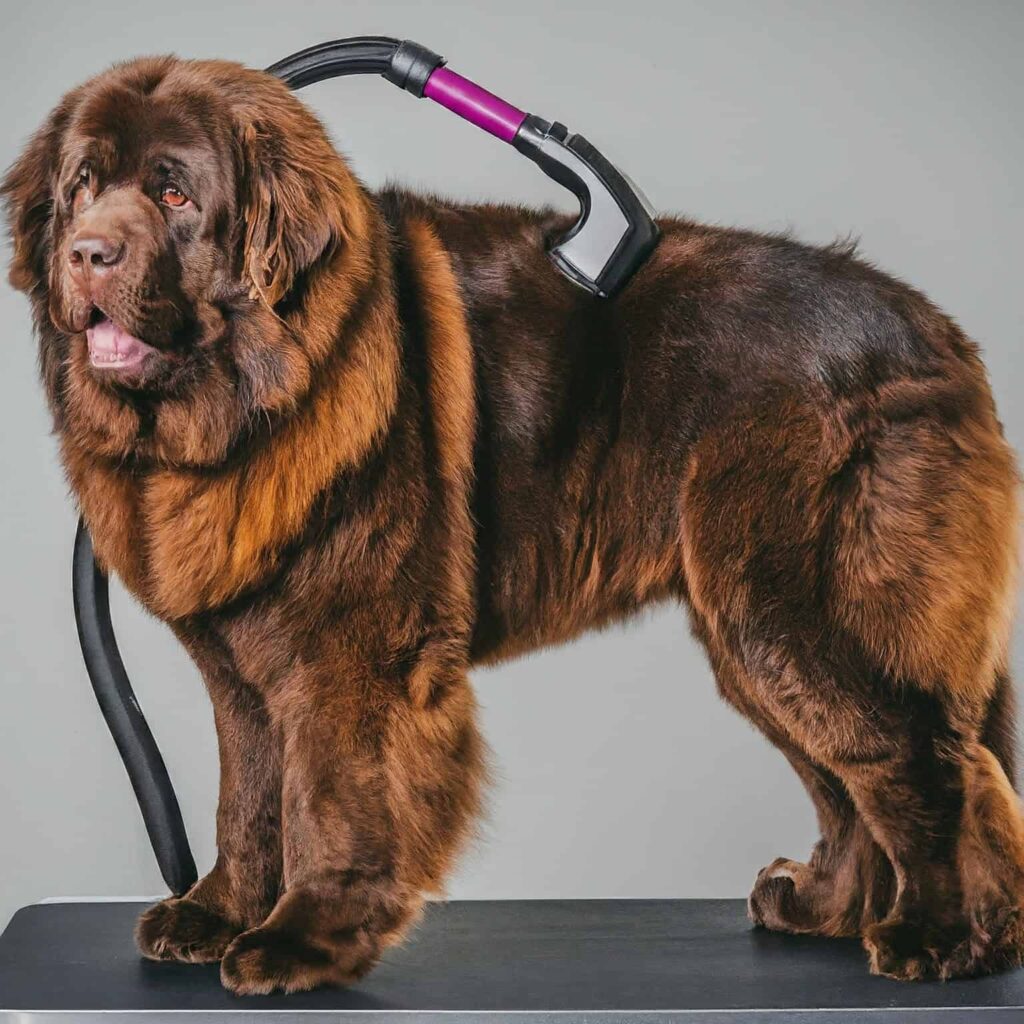
Vacuum Attachments and Accessories
Using the right attachments and accessories can enhance the efficiency and effectiveness of vacuum grooming. Here’s a rundown of the most useful tools.
Grooming Brush
The grooming brush is ideal for regular sessions. It helps keep your dog’s coat in good condition by removing loose hair and dirt. This attachment is great for general maintenance and can be used on most coat types.
De-shedding Tool
A de-shedding tool is specifically designed to remove loose undercoat hair. It’s perfect for dogs that shed a lot, reducing the amount of fur left around your home. This tool reaches deeper into the coat without damaging the top layer.
Dematting Tool
A de-matting tool is essential for dogs with long or thick fur. It gently removes mats and tangles, preventing discomfort. Regular use can keep your dog’s coat smooth and tangle-free.
Paw Trimmer
A paw trimmer is useful for grooming the hair around your dog’s paws. Keeping this area neat prevents dirt accumulation and reduces the risk of mats forming between the toes.
Nail Grinder
A nail grinder is a safer alternative to traditional nail clippers. It allows for gradual trimming and reduces the risk of cutting quickly. This tool is great for comfortably maintaining your dog’s nail length.
Electric Clippers
Electric clippers are ideal for giving your dog a trim. They come with various comb attachments to cater to different hair lengths. This tool is especially useful for dogs that need regular haircuts.
Hair Remover Roller
This tool efficiently removes hair from upholstery and fabrics around your home. It’s a handy accessory to keep your living space clean after grooming sessions.
Cleaning Nozzle
A cleaning nozzle helps reach hard-to-access areas. It’s perfect for precise cleaning around the house, especially in tight corners or between furniture.
Frequency of Dog Grooming with Vacuum
How often you should vacuum groom your dog depends on several factors, including coat type, length, and shedding patterns. Here’s a general guide to help you determine the right schedule for your furry friend.
Short-Haired Dogs
Short-haired dogs typically require less frequent grooming. A weekly session is usually sufficient to keep their coats in good condition. Regular vacuum grooming helps distribute natural oils, keeping their coat shiny and healthy. Vacuuming once a month is often enough to manage to shed and keep loose hair under control.
Long-Haired Dogs
Long-haired breeds, on the other hand, need more frequent attention. These dogs benefit from being vacuumed at least twice a month to prevent matting and reduce shedding. Daily brushing can complement vacuum grooming, helping to keep their long coats tangle-free and healthy. Regular baths every four to six weeks are also necessary to keep their fur clean and manageable.
Double-Coated Dogs
Breeds with double coats, such as Golden Retrievers and Huskies, shed their undercoats twice a year. During these shedding seasons, you might need to vacuum groom them more frequently—up to two or three times a week. This helps manage the excess fur and keeps your home cleaner. Outside of shedding seasons, a weekly vacuum grooming session should suffice.
Seasonal Considerations
Dogs tend to shed more in the spring and fall. Increasing the frequency of vacuum grooming during these times can help manage the additional loose fur. Adjusting your grooming schedule to match these seasonal changes can make a significant difference in maintaining a clean home and a healthy coat for your dog.

Grooming Different Breeds
Different breeds have unique grooming needs. Here’s a look at how to adapt vacuum grooming techniques for various types of coats.
Short-Haired Breeds
Breeds like Beagles and Boxers have short coats that are relatively easy to maintain. A basic grooming brush attachment on your vacuum works well for these dogs. Weekly grooming helps remove loose hair and distribute natural oils, keeping their coats sleek and shiny.
Long-Haired Breeds
Breeds with long, flowing coats, such as Collies and Afghan Hounds, require more attention. Use a de-shedding tool and a de-matting attachment to tackle tangles and mats effectively. Regular vacuum grooming helps manage shedding and keeps their coats looking their best. These breeds may also benefit from additional tools like electric clippers for occasional trims.
Double-Coated Breeds
Dogs with double coats, such as German Shepherds and Siberian Huskies, need specialized care. An undercoat rake attachment is ideal for these breeds, especially during shedding seasons. Vacuum grooming helps remove loose undercoat hair and prevents matting, which is crucial for maintaining their coat’s health.
Curly and Wavy-Haired Breeds
Breeds like Poodles and Bichon Frises have unique grooming needs due to their curly or wavy hair. These coats can trap shed hair, leading to mats if not properly managed. Use a grooming brush and a de-shedding tool to keep their coats clean and free of tangles. Vacuum grooming twice a month can complement daily brushing and regular professional grooming sessions.
Wire-Coated Breeds
Breeds like Terriers and Wirehaired Dachshunds have coarse, bristly coats. These dogs benefit from hand stripping or regular trimming. Vacuum grooming helps remove loose hair and debris, but it’s essential to use a tool designed for their specific coat type to avoid damaging the hair.
By tailoring your vacuum grooming approach to your dog’s breed and coat type, you can ensure they receive the best care possible, keeping them looking good and feeling comfortable year-round.
Combining Vacuum Grooming with Other Techniques
Brushing and Vacuuming Together
Combining brushing with vacuum grooming can enhance the overall grooming process. Start by using a traditional brush to detangle and remove loose hair. This prepares the coat for vacuum grooming, allowing the vacuum to pick up more hair efficiently. Regular brushing distributes natural oils throughout the coat, improving its health and shine. This combination ensures a thorough cleaning and keeps your dog’s coat in top condition.
Bathing and Vacuum Grooming
Bathing complements vacuum grooming perfectly. Bathing removes dirt and debris, making the vacuuming process more effective. Use a gentle dog-specific shampoo to cleanse the coat, followed by a thorough rinse. After drying your dog with a towel, use the vacuum to remove any remaining loose hair. This method ensures a deep clean and minimizes shedding around your home.
Using Vacuums Post-Bath
Using a vacuum after a bath can help in several ways. It assists in drying the coat, especially for long-haired breeds, and removes any loose hair that is dislodged. Ensure your vacuum has a low-noise setting to avoid startling your pet. This post-bath vacuuming step can make grooming sessions more efficient and leave your dog looking its best.
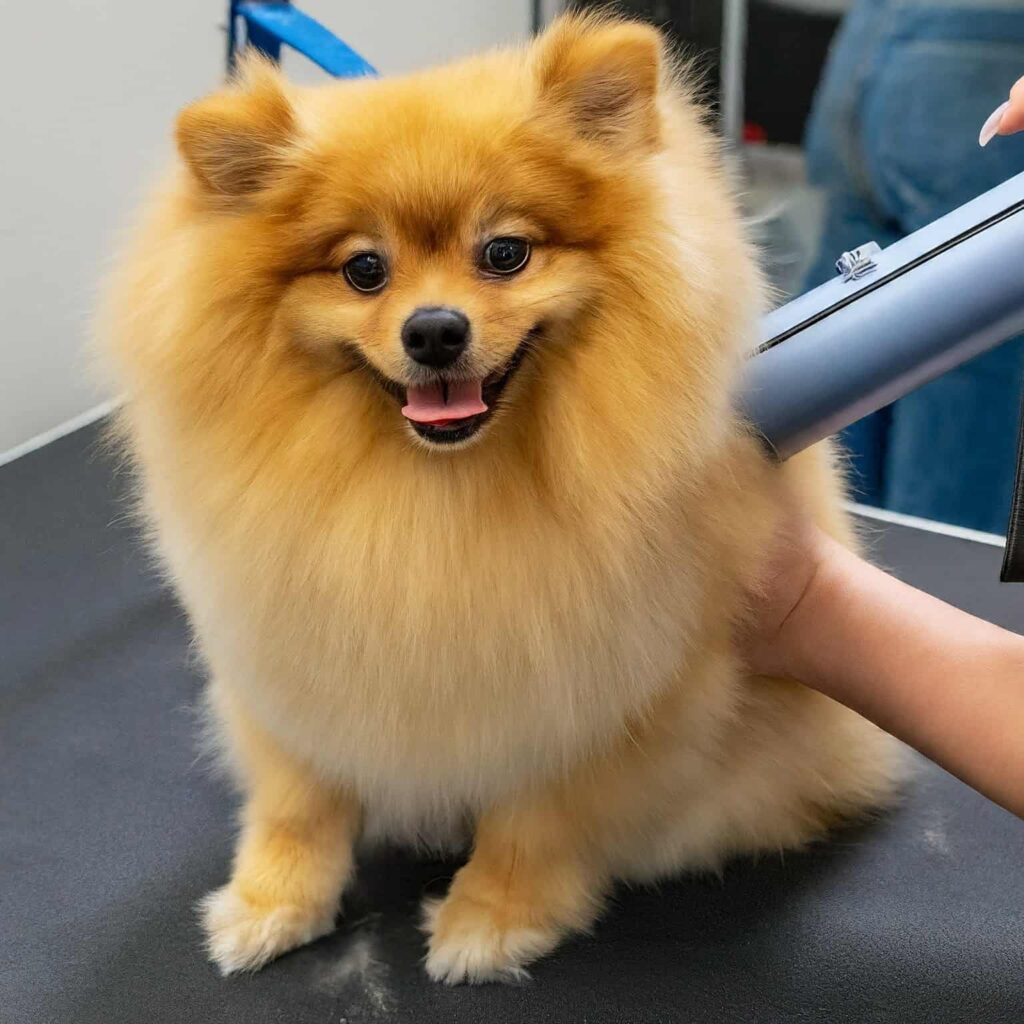
Vacuum Grooming for Dogs with Skin Conditions
Safe Grooming Practices for Sensitive Skin
Dogs with sensitive skin require extra care during grooming. Use a vacuum with adjustable suction levels to avoid irritating their skin. Look for pet-specific attachments with soft bristles designed to be gentle on the coat. Regular, gentle grooming can help maintain skin health by removing loose fur and preventing matting without causing irritation.
Recommended Products for Dogs with Skin Issues
For dogs with skin conditions, use hypoallergenic shampoos and conditioners. These products are formulated to be gentle and reduce the risk of allergic reactions. Regular grooming with a vacuum can help manage these conditions by keeping the coat clean and free from irritants. Ensure the vacuum you use has a HEPA filter to capture allergens effectively.
Consulting with a Veterinarian
Always consult with a veterinarian before starting a new grooming routine, especially for dogs with skin issues. A vet can recommend specific grooming products and techniques tailored to your dog’s needs.
They can also guide how often to groom and what signs to watch for that might indicate a problem. Regular check-ups can ensure your dog’s skin and coat remain healthy and address any issues promptly.
DIY vs. Professional Grooming
DIY Grooming: Pros and Cons
DIY grooming has its perks. You can save money and bond with your dog. Home grooming can be less stressful for your pet, as they are in a familiar environment. Investing in quality grooming tools upfront can provide long-term savings. You also have complete control over the products used and the grooming process, allowing you to cater to your dog’s needs and preferences.
However, grooming your dog at home requires knowledge and skill. Some breeds have specific grooming needs that can be challenging to meet without experience. Tasks like nail trimming and ear cleaning can be tricky and require careful handling to avoid injury.
The initial cost of high-quality grooming tools can also be significant. Moreover, DIY grooming can be time-consuming, especially for dogs with long or thick coats, requiring a considerable commitment to maintaining their appearance and health.
Professional Grooming: Pros and Cons
Professional groomers bring expertise and specialized equipment to the table. They are skilled in handling various breeds and coat types and can provide thorough grooming, including ear cleaning, nail trimming, and checking for skin conditions or parasites. Regular visits to a professional groomer can also help maintain your dog’s overall health and hygiene.
However, professional grooming services can be costly, particularly for breeds requiring frequent grooming. Some dogs may find the salon environment stressful, especially if they are not used to being around other pets or unfamiliar settings.
Additionally, finding a reputable groomer may take time and effort, and scheduling appointments can sometimes be inconvenient.
Future Trends in Dog Grooming with Vacuum
Innovations in Vacuum Grooming Technology
Vacuum grooming technology continues to evolve, offering pet owners more efficient and pet-friendly options. Innovations include quieter motors, adjustable suction levels, and a variety of grooming attachments designed to cater to different coat types and grooming needs. These advancements make vacuum grooming more accessible and comfortable for both pets and owners.
Trends to Watch
The pet grooming industry is seeing a shift towards more holistic and health-focused practices. These include the use of natural and hypoallergenic grooming products, as well as techniques that minimize stress and promote well-being. Mobile grooming services are also becoming more popular, providing convenience and reducing the stress associated with travel for both pets and owners.
The Impact of Technology
Technology is significantly transforming pet grooming. From high-tech grooming tools and apps that help schedule and track grooming sessions to AI-powered devices that can monitor a pet’s health and grooming needs, the future of pet grooming is geared toward making the process more efficient, personalized, and stress-free.
